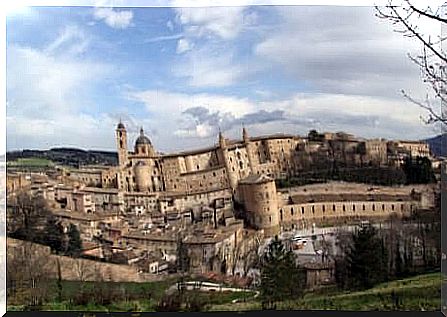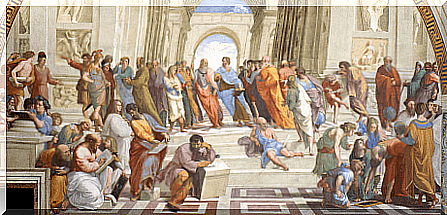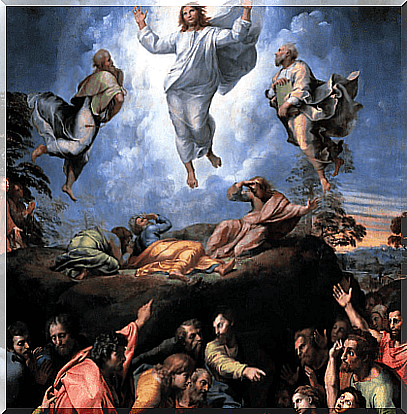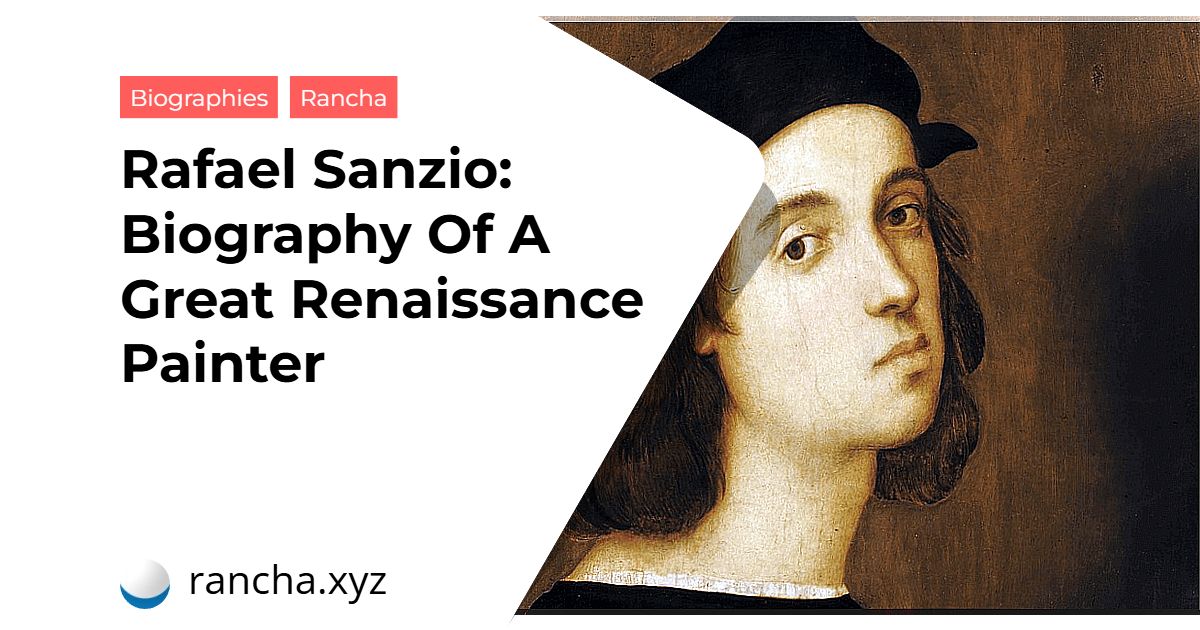Discover the biography of Rafael Sanzio, one of the greatest painters of the High Renaissance. He was a famous artist who stood out among his contemporaries thanks to his Madonnas , his portraits, frescoes and architectural compositions.
The Italian Renaissance is a period characterized by the stylization of figures and the development of perspective. A look at the Greco-Latin classics, trying to recover the beauty that, from their point of view, was lost in the medieval darkness. During this time, some of the greatest artists in history emerged.
Artists were also considered scientists; humanism is a movement linked to this period, a movement in which art, philosophy and science walked side by side. Painters were experts in observing nature; in this way, they were able to portray the effects of light and shadow. However, nature was not their only object of study, as Renaissance artists also observed society.
Renaissance artists closely observed cultural interactions and were inspired by them. Thus, their lives were permeated by their research and analysis.
Find out what were the factors that led Rafael Sanzio to become one of the greatest artists in history.
First years of Rafael Sanzio’s biography
Rafael Sanzio’s biography began with his birth on April 6, 1483 in Rinello Sanzio, Urbino, Italy. At that time, Urbino was a cultural center that breathed art. Although his family fortune was destroyed by the war, his father, Giovanni Sannti, knew how to read and write. Sannti was also a painter at the court of Urbino.

Rafael knew very little about his mother, as she died very young and his father remarried after her death. Rafael was considered a child prodigy. His father was able to teach him from an early age and transmit the principles of humanist philosophy at the court of the Duke of Urbino.
In 1494, when Rafael was 11 years old, his father died and he had the difficult task of managing his studio. His success in this role quickly surpassed that of his father.
Rafael was soon considered one of the best painters in the city. Even when he was still in his teens, he was commissioned to paint for the Church of San Nicola in the nearby town of Castello.
Stay in Perugia and the Florentine period
In 1500, a master painter named Pietro Vannunci, also known as Perugino, came into contact with Raphael. Perugino invited the young Raphael to become his apprentice in Perugia, in the region of Umbria, located in central Italy.
During this period, Rafael began to develop his own style. Sanzio was a young man full of life, who loved the city and the people there. After having worked in Siena, young Raphael arrived in Florence. He was received in the city in 1504 on the recommendation of the Duchess of Urbino to the Gonfaloniere.
In Florence, Sanzio was greatly influenced by the works of the most famous Italian painters of the time. Among these painters were Fra Bartolommeo, Leonardo da Vinci, Michelangelo and Masaccio. For Rafael, these innovative artists had reached an entirely new level of depth in their composition.
By carefully studying the details of his work, one can see how crucial the Florentine period was for Raphael. From his stay in Florence and under the influence of these great painters, Raphael managed to develop an even more expressive personal style. Sanzio did not live in Florence continuously; he traveled to work in different parts of northern Italy.
Your stay in Rome, the capital of art
Raphael moved to Rome in 1508 to paint Le Stanze (the estancias) at the Vatican. These works were carried out under the patronage of Pope Julius II.
Between 1509 and 1511, Sanzio worked at the Vatican Estancias. Le Stanze would become one of the most respected fresco cycles of the Italian High Renaissance, especially those located in the Stanza della Segnatura (Signature Hall of the Vatican).
This series of frescoes includes some of Raphael’s most famous pieces: The Triumph of Religion and The School of Athens. Here, Sanzio embodied the humanist philosophy he learned at Urbino’s court as a child.
During his stay in Rome, Raphael was more prolific than at any other time in his life. He was inspired by the works of his contemporaries. The city’s artistic environment and Rome itself led Raphael to the peak of his career.

Rafael Sanzio and the presence of architecture in his biography
In 1514, after the death of the architect Donato Bramante, Pope Julius II hired Raphael as his main architect. Under this designation, Raphael created the design for a chapel in Sant ‘Eligio degli Orefici.
Sanzio gained fame for his pictorial work at the Vatican. In this way, it was possible to hire a team of assistants to help finish the frescoes at Stanza dell’Incendio . Consequently, he was able to free himself from these tasks to concentrate on other projects.
Sanzio continued to accept commissioned projects, including the portraits of Popes Julius II and Leo X, and his greatest painting on canvas, The Transfiguration (commissioned in 1517).
Despite this, he had already started to work fully on architecture. The details of Rafael’s architecture already announced a change in style: it was the birth of Baroque.
death and legacy
On April 6, 1520, on his 37th birthday, Raphael died suddenly and unexpectedly from mysterious causes in Rome, Italy, without completing his great work, The Transfiguration. In celebration of the Mass of his funeral at the Vatican, The Transfirguração unfinished Sanzio was placed in front of his coffin.
At the time of his death, there were more than 50 apprentices in the artist’s studio, one of the largest at the time. However, his studio was not what most interested the public at the time, but the painter’s own premature death, which caused much speculation.

Vasari, one of the first art historians, refers to Sanzio’s death as a mysterious event. Vasari blamed the painter’s untimely death “on the excesses of love”. While these may seem like a rather amusing hypotheses, the reason for the death of the great Sanzio has never been confirmed.
Rafael left a considerable legacy and was celebrated and recognized in his lifetime. His funerals were majestic and thousands of people attended to honor his memory. Interestingly, the renowned painter was born and died on Good Friday. His body was buried in the Pantheon in Rome, Italy.
His paintings are of immense compositional clarity and contain balanced elements. Sanzio is, without a doubt, the painter who elevated the perspective of painting to excellence. After his death, Raphael’s move towards Mannerism influenced painting styles in Italy’s late Baroque period.
Sanzio is still widely considered the leading artistic figure in Italian High Renaissance classicism. The inscription on his tombstone reads: “Here is Raphael, by whom in life nature feared to be defeated, and when he died, she feared to die.”
 rancha.xyz Be free to choose their own route to self-knowledge, health and balance of body and soul.
rancha.xyz Be free to choose their own route to self-knowledge, health and balance of body and soul.




